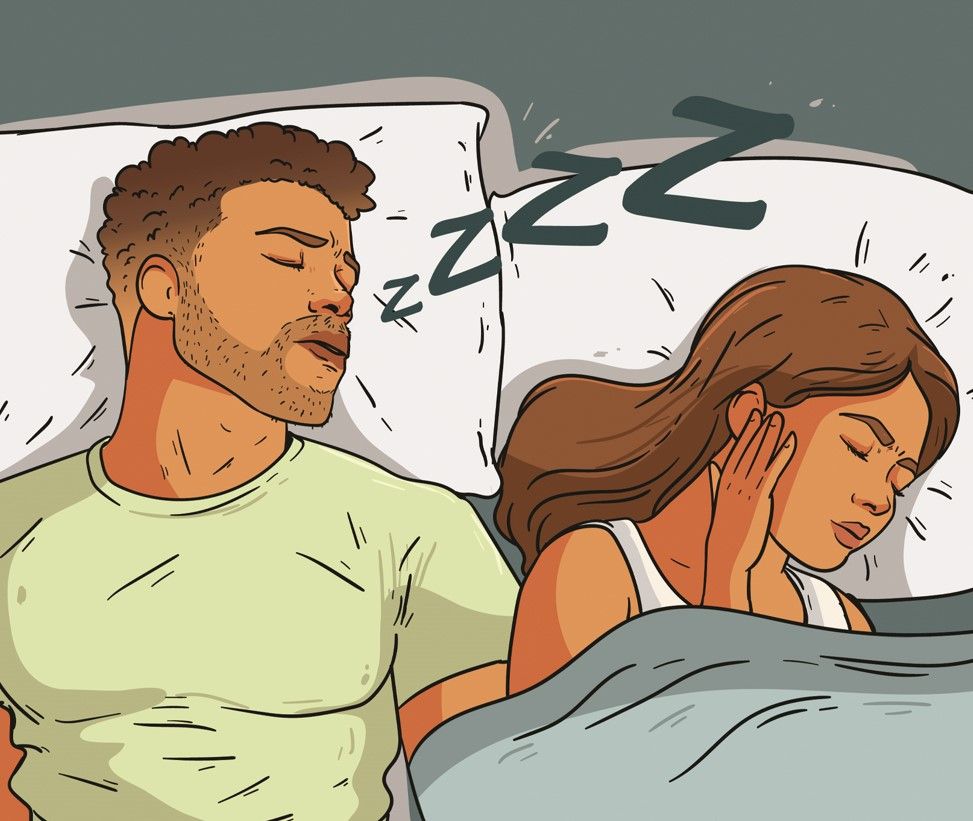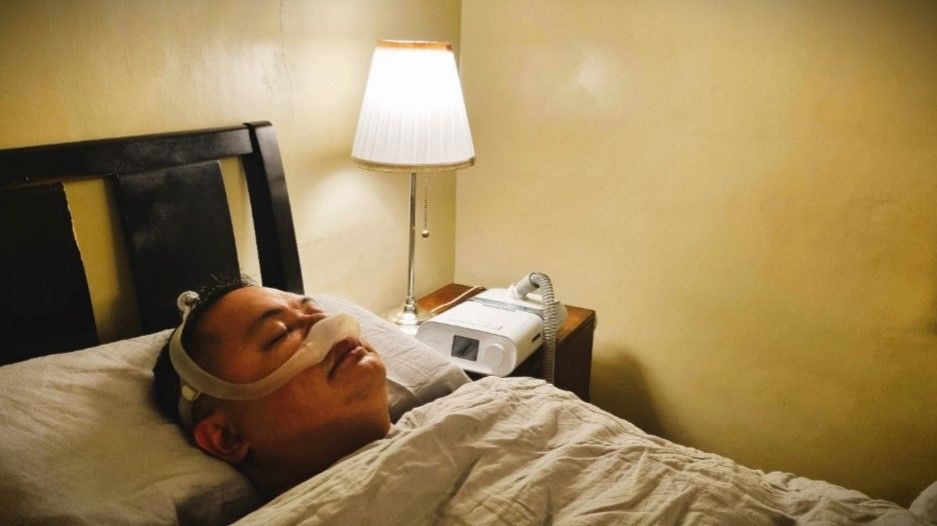Do you snore?
You may have obstructive sleep apnea
A snore is one of the most obnoxious sounds that a person can make. I don’t mean the gentle, soft and rhythmic snoring that people who are very tired occasionally make. I mean the loud, explosive, erratic, and bed-shaking eructation that rouses both the snorer and anyone unfortunate enough to be sleeping in the vicinity. These kinds of unpleasant snores may signal something more sinister, a condition known as obstructive sleep apnea (OSA).
Snoring is produced by the soft palate and other structures of the throat and upper airway. It occurs when the airway is sufficiently obstructed and the passage of air through the narrowed opening causes the tissues to vibrate and produce sound. The usual culprit is the tongue and a lax soft palate, although large tonsils can cause snoring, especially in young people.

When people are asleep, the muscles holding up the soft palate relax and the tongue falls back. This can significantly impede the passage of air especially in obese people with thick necks. Other factors that contribute to this process are the use of alcohol and sedating drugs. When the obstruction is very bad, breathing may be interrupted and the oxygen saturation drops until the blockage can be overcome. This is usually the point where there is an explosive snore as the body breaks the seal and finally gets some air into the lungs. This can happen many times a night and leaves the snorer exhausted and fatigued. This condition is known as obstructive sleep apnea because the tissues of the throat “obstruct” the air during sleep, and while obstructed, the person cannot breath (apnea). OSA results in low energy and decreased productivity throughout the day.
Without proper treatment, OSA can exacerbate chronic health conditions and increase the risk of having a heart attack or a stroke. OSA can also ruin relationships because anyone unfortunate enough to sleep in the same room as the patient will have frequently interrupted sleep because of the loud snoring and sudden bursts from the airway being forced open.
Why do I know so much about OSA even if it isn’t part of my infectious diseases subspecialty? It is because I have OSA. Over the years, I have gained more weight and my wife, who is also a doctor, noticed that I started snoring a lot. She was particularly alarmed when I would stop breathing in between snoring fits. She described these as having breathing movements, but no air was getting in. This is a clear sign of airway obstruction. I would then somehow break the seal with a loud snore and the cycle would start again. This was when we decided that I needed to get a sleep study.

A sleep study is a procedure that is ordered by a sleep specialist, usually a pulmonologist (a lung doctor), where many sensors are attached to a patient during sleep. When they say many sensors, they aren’t kidding. I looked like a Christmas tree. They attach wires to the scalp to record brain waves (don’t worry, the wires don’t hurt) and sensors to the face, neck, chin, chest, and fingers. This allows them to monitor many parameters when a patient is asleep, including the behavior of the respiratory muscles, the oxygen saturation of the blood, and eye movements, which help determine the stage and depth of sleep. A video camera records the entire setup. In the second part of the sleep study, they wake you up and hook you to a CPAP (continuous positive airway pressure) machine, which blows air into the nose to keep the airway open. This allows them to figure out how much air pressure is needed to keep the airway open.
Believe it or not, even with all those wires attached, I was still able to sleep. After they attached the CPAP, I slept much better than I had in a long time. I felt refreshed the next day, like I had gotten some real rest for the first time in a very long while. My pulmonologist reviewed the results and confirmed that I had severe OSA. The reason I felt so well with the CPAP was because prior to its placement during the sleep study, my oxygen saturation would drop to as low as 84 percent. He recommended I wear a CPAP every night to prevent complications from OSA.
The CPAP treatment does take getting used to. It blows a continuous stream of air into the nose and it can sometimes feel like you are drowning because you are exhaling against the flow. Newer CPAP machines have something called a “ramp” where the pressure starts out at a lower pressure and once the machine detects you are asleep, it increases the pressure accordingly to keep the airway open. The CPAP immediately stopped my snoring, to the delight of my wife. I still use it every night and I have felt so much more energetic since. It is a relatively expensive machine and requires careful maintenance. You also have to buy consumables like air filters, masks and hoses. Despite these issues, it is probably one of the best investments I have ever made.
There are other ways to treat OSA. For mild OSA, losing weight can sometimes improve air flow to the point that CPAP is no longer necessary. Oral and nasal appliances can also help keep the airway open, but these have variable effectiveness. Some people undergo soft palate surgery, but this is an invasive and drastic measure. It is usually seen as a last resort. A new procedure known as Inspire uses an implant to stimulate the hypoglossal nerve, which moves the tongue out of the way during inspiration. It is a fairly new procedure and still involves some surgery so I’m not quite ready to commit to it at this time, but it may be an option for people who have a hard time using a CPAP machine.
So if you snore, talk to your doctor. You may need a sleep study and treatment for OSA. It can help you and your loved ones get a good night’s sleep, and it may save your life.